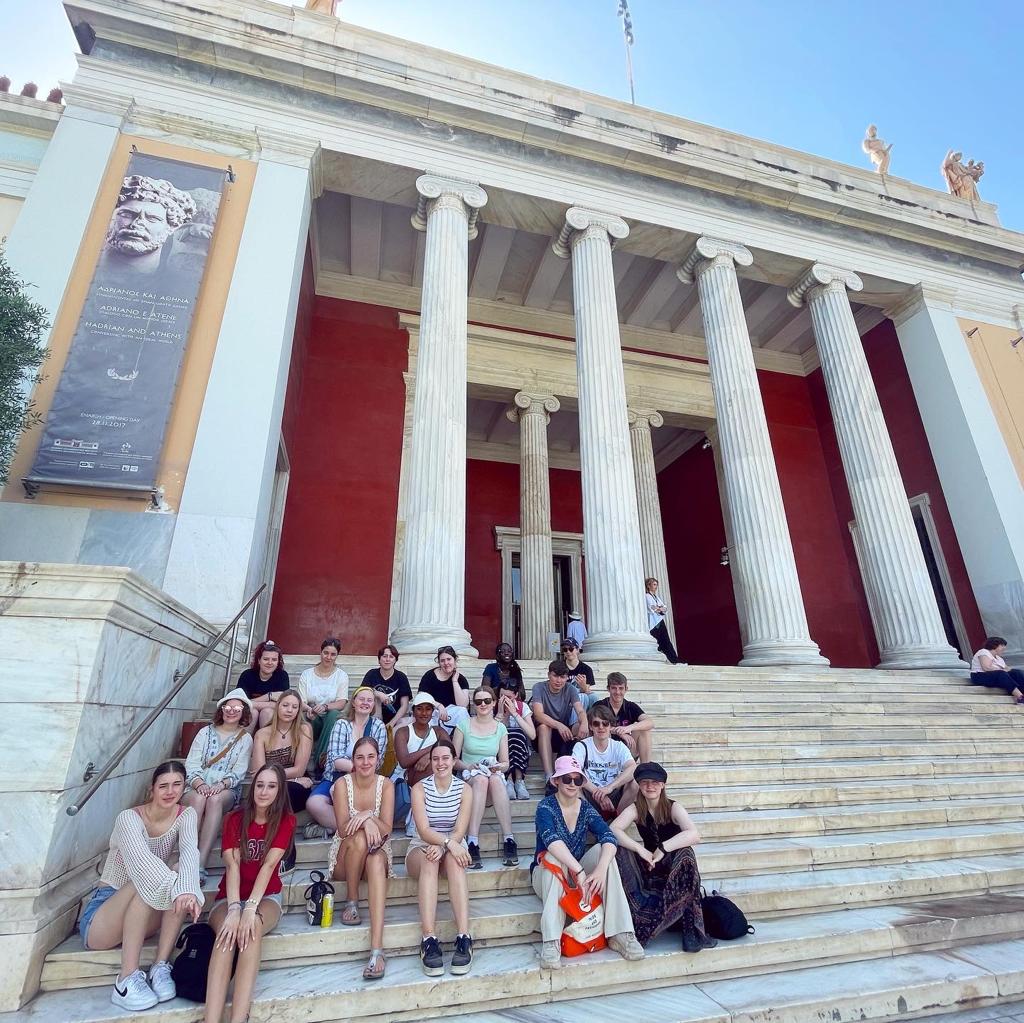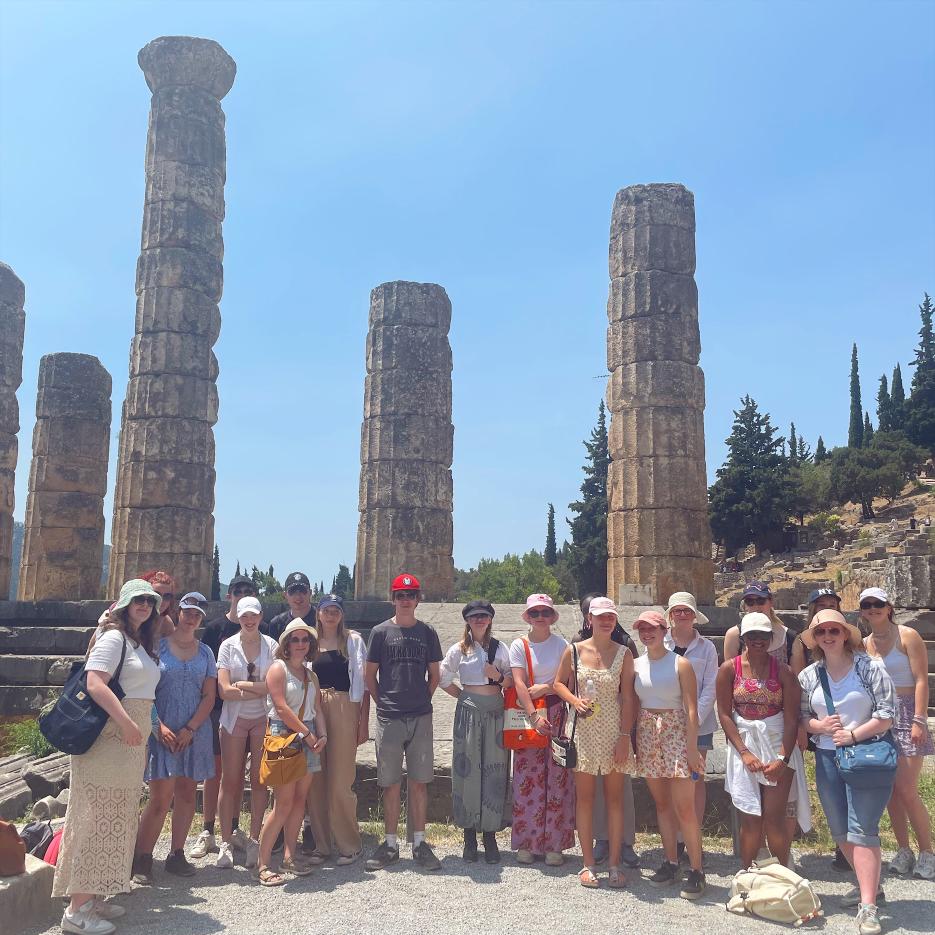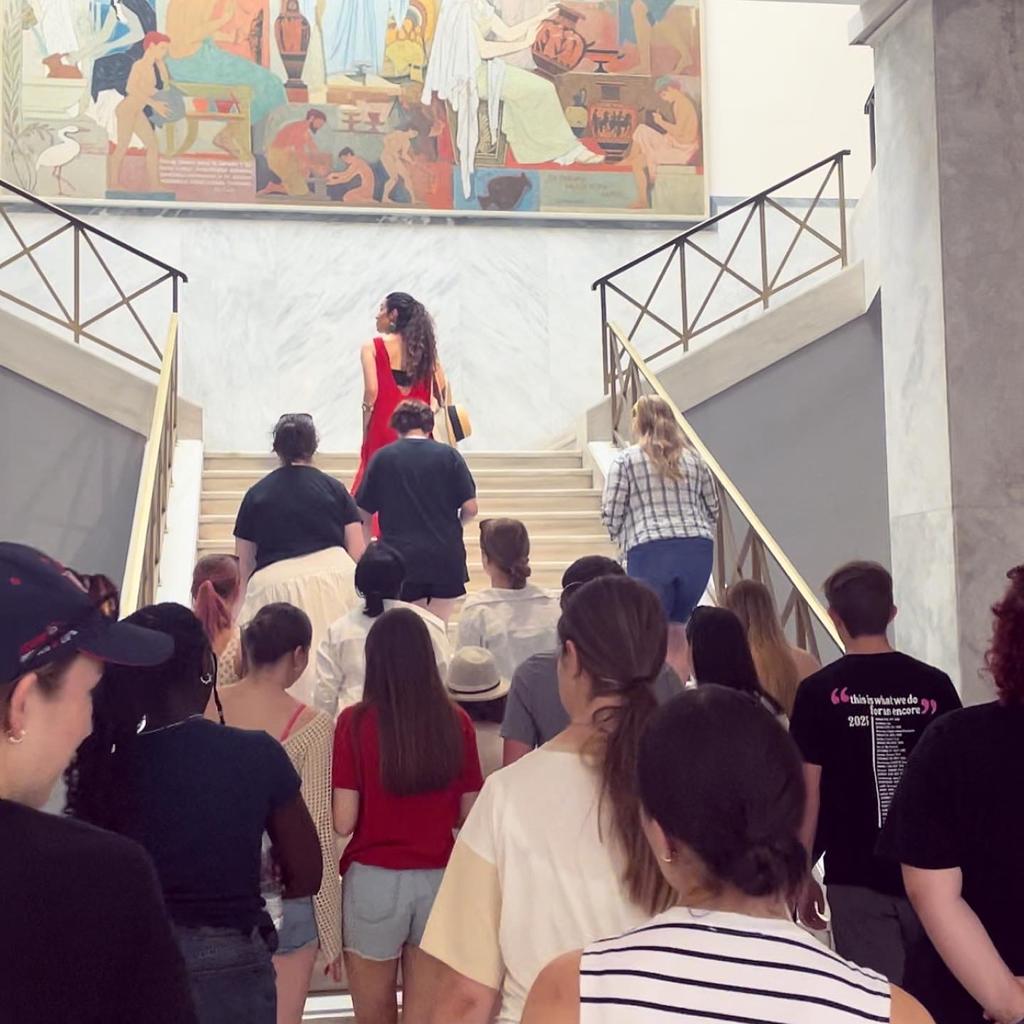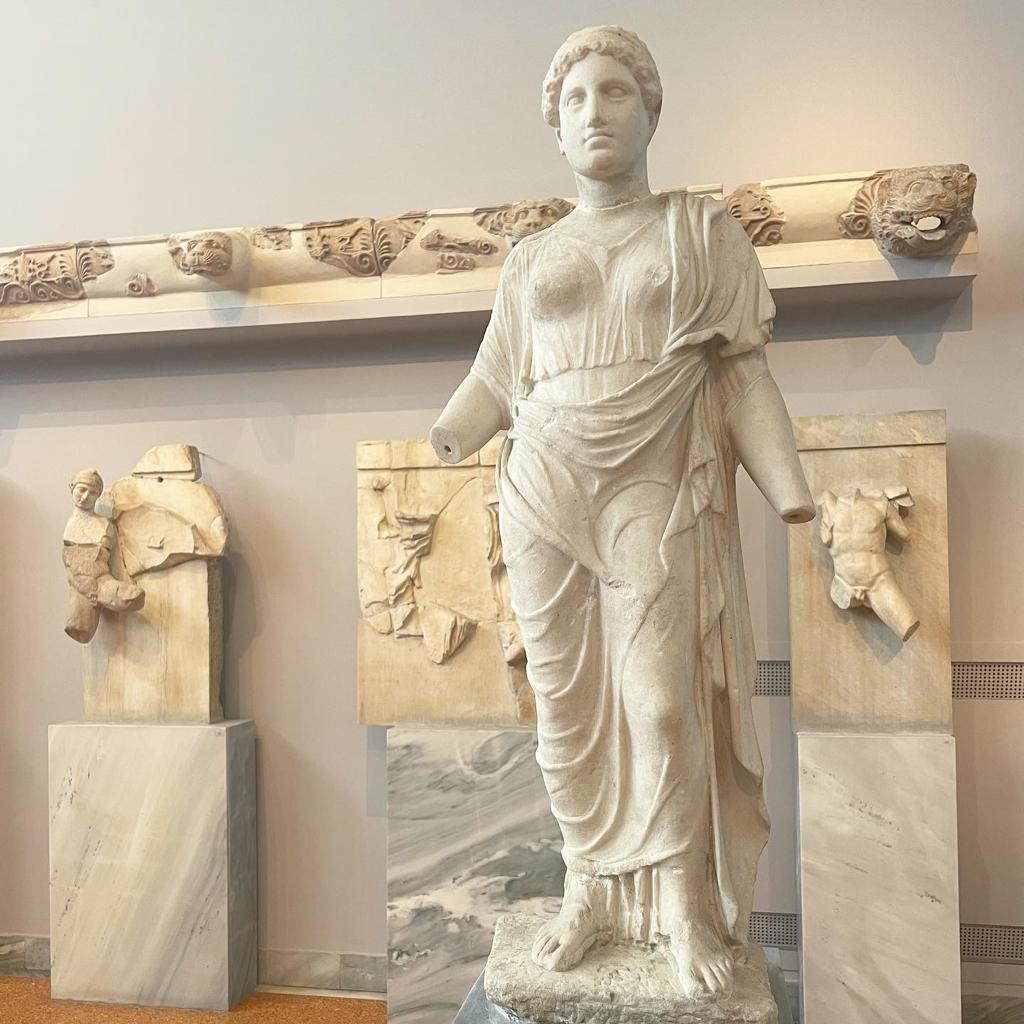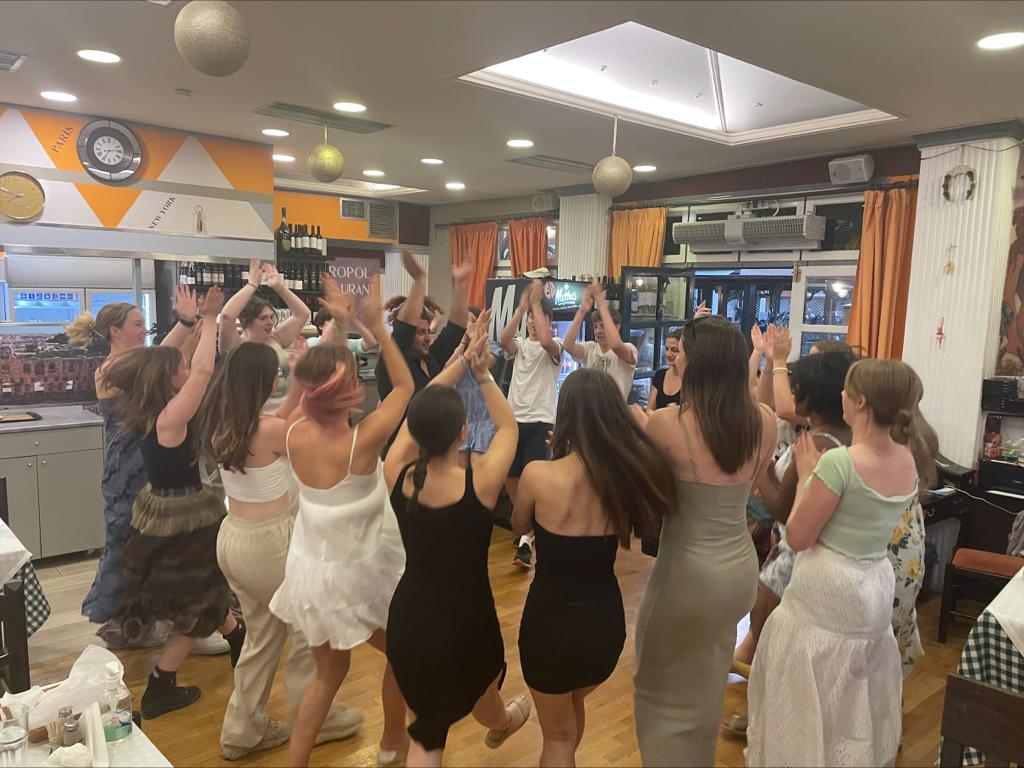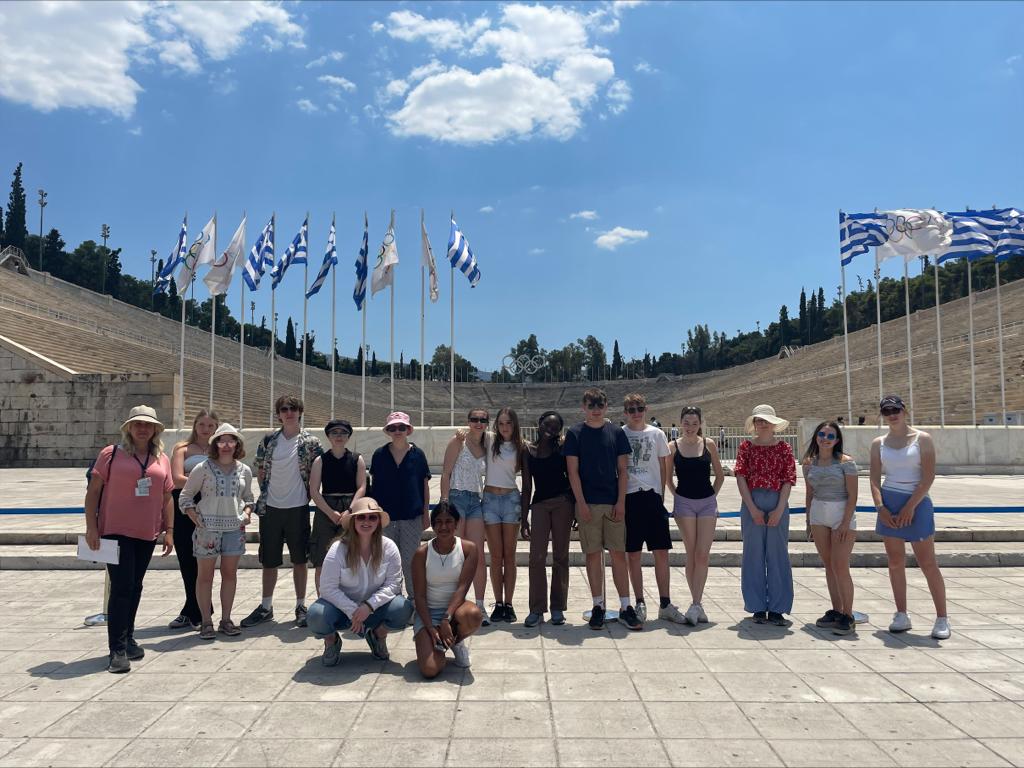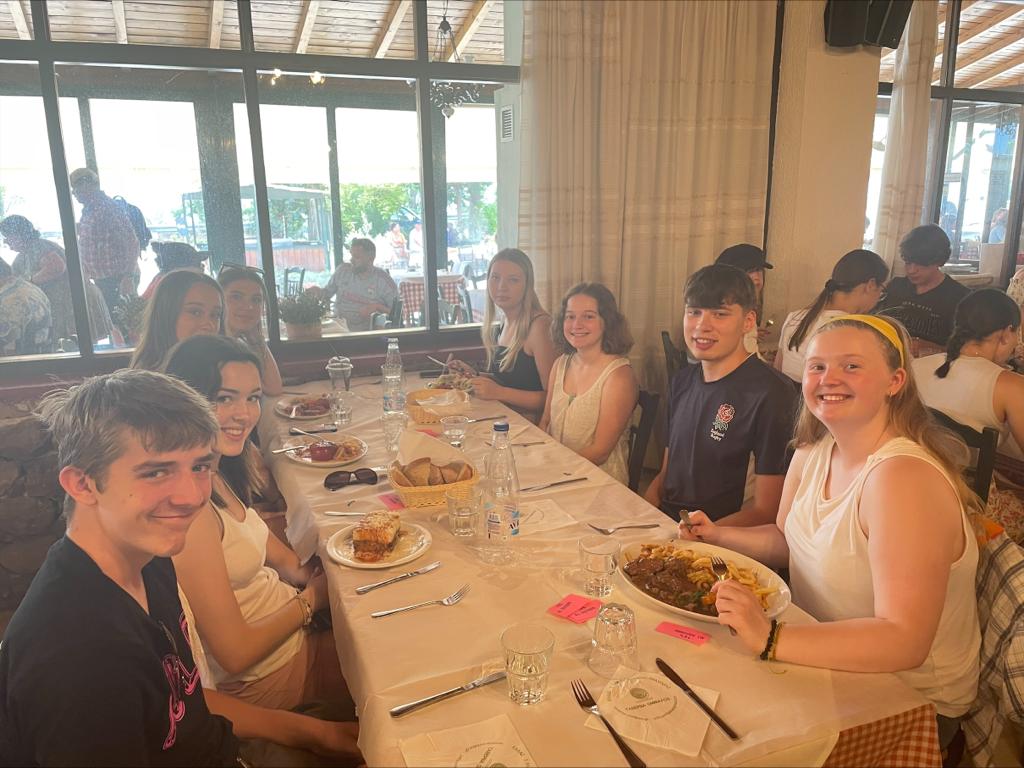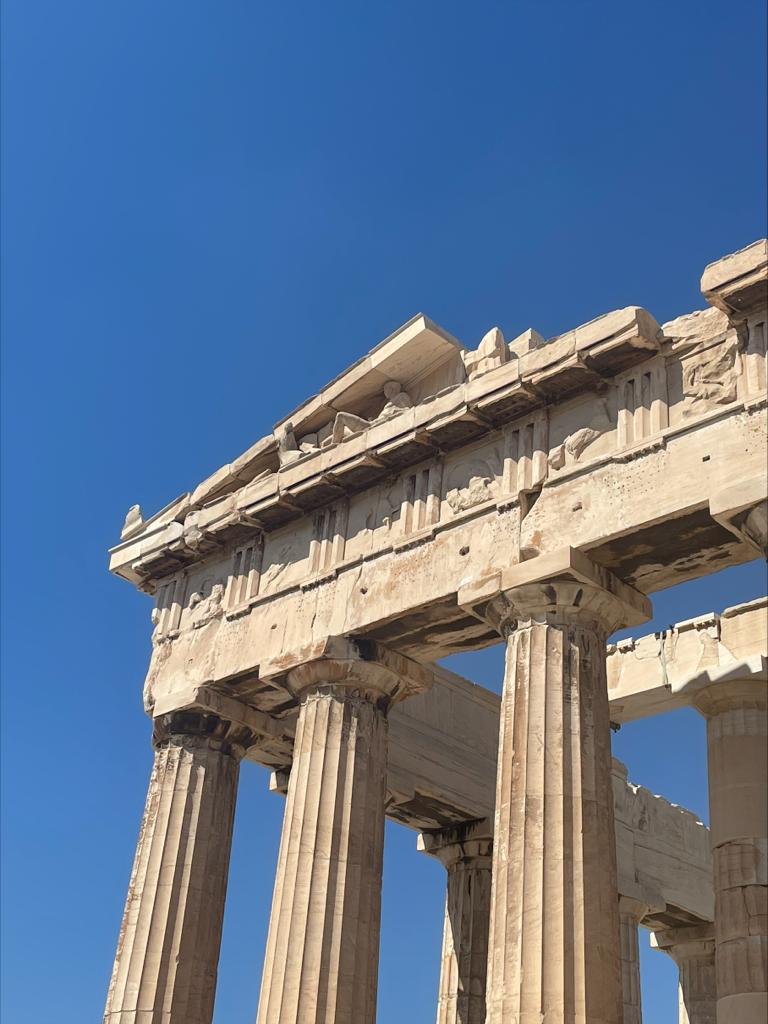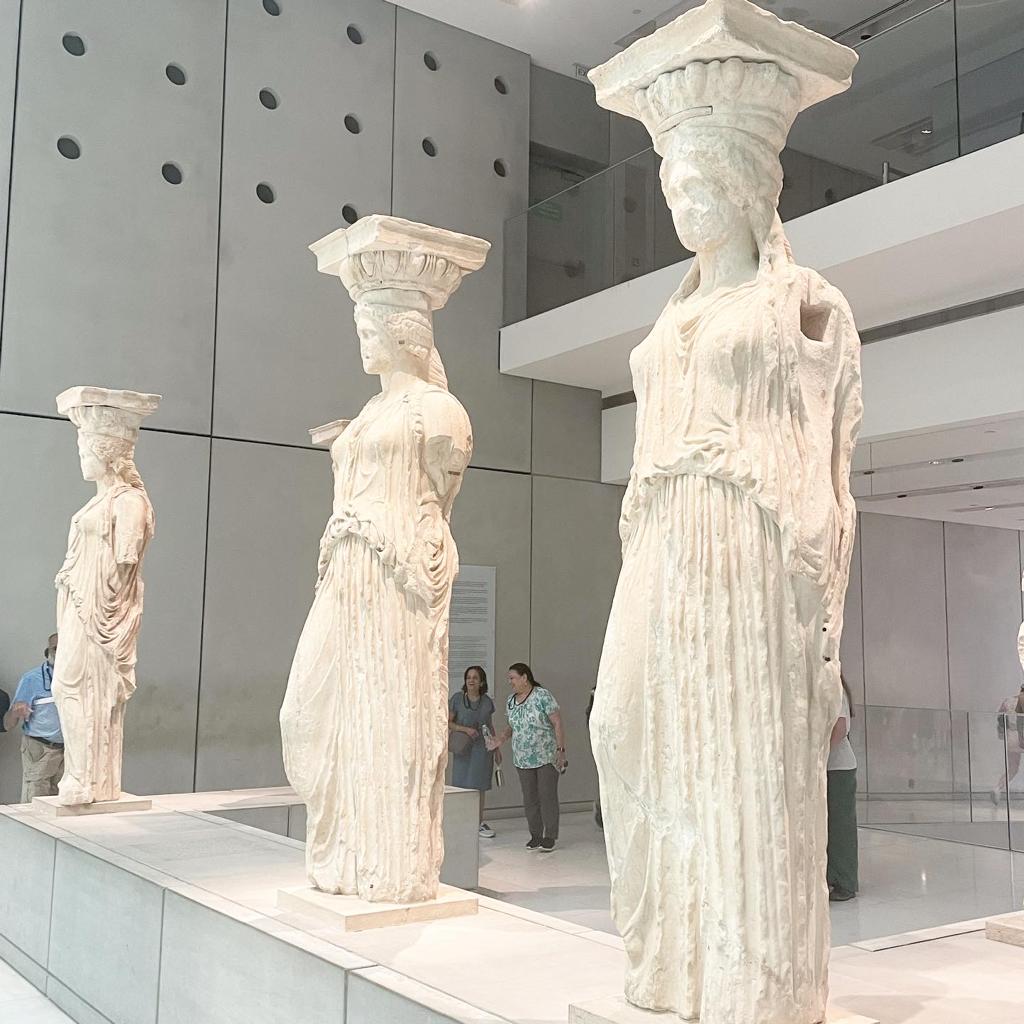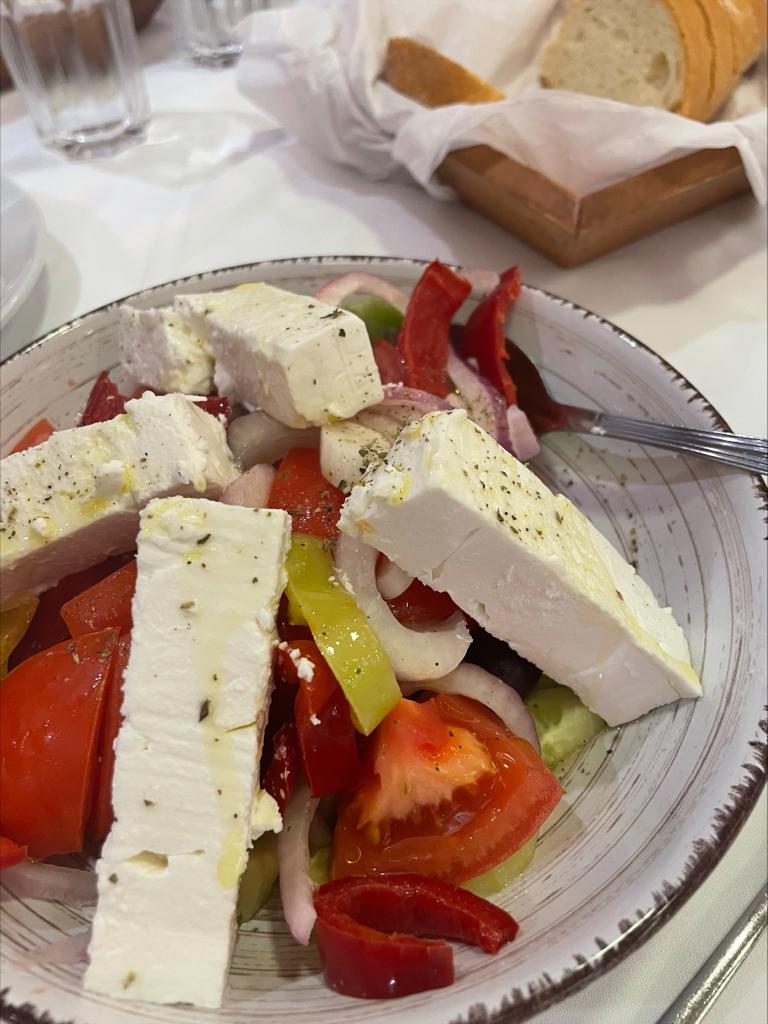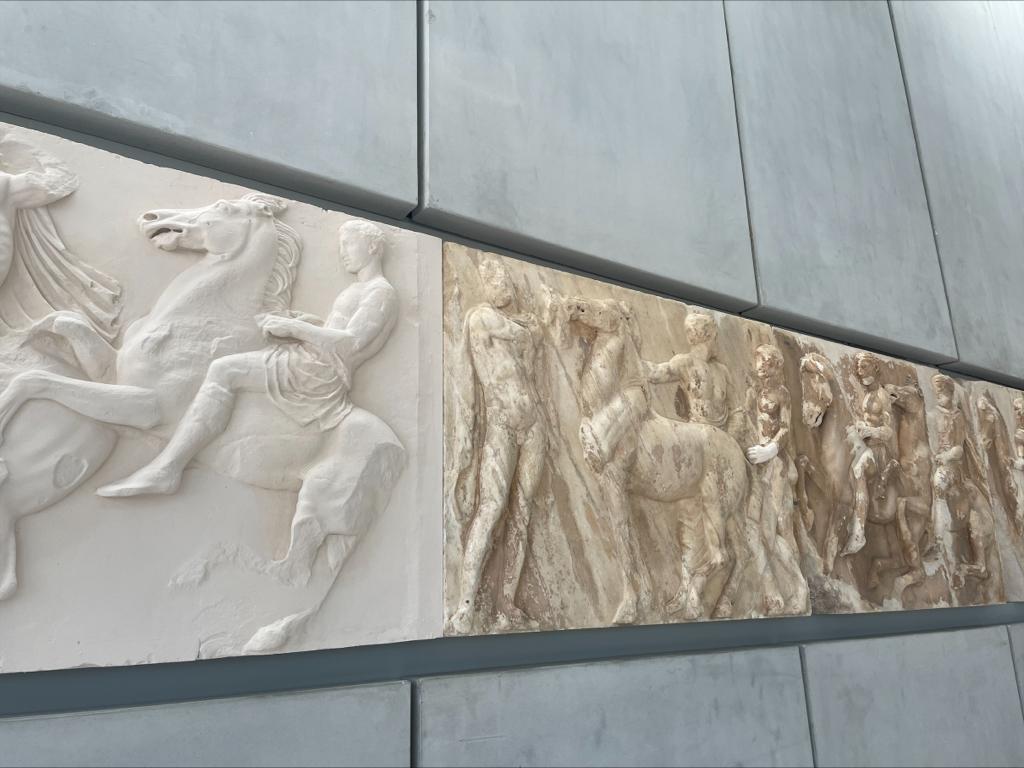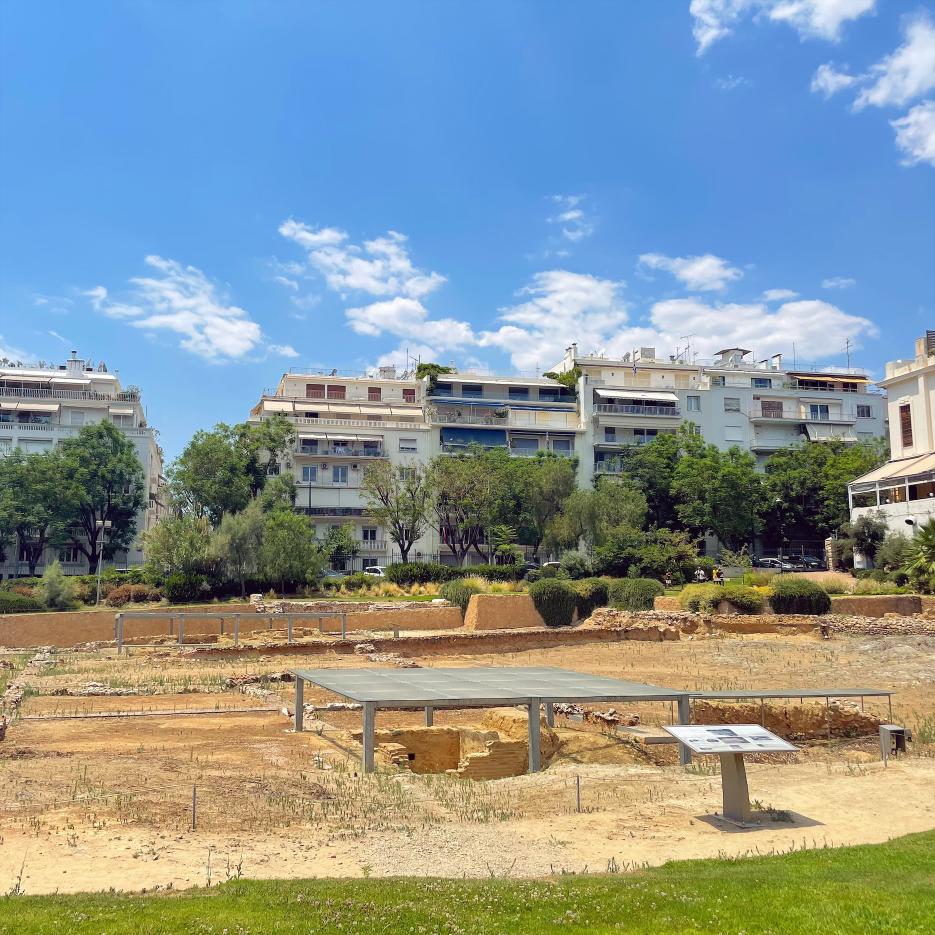Walking in the footsteps of the ancient Greeks
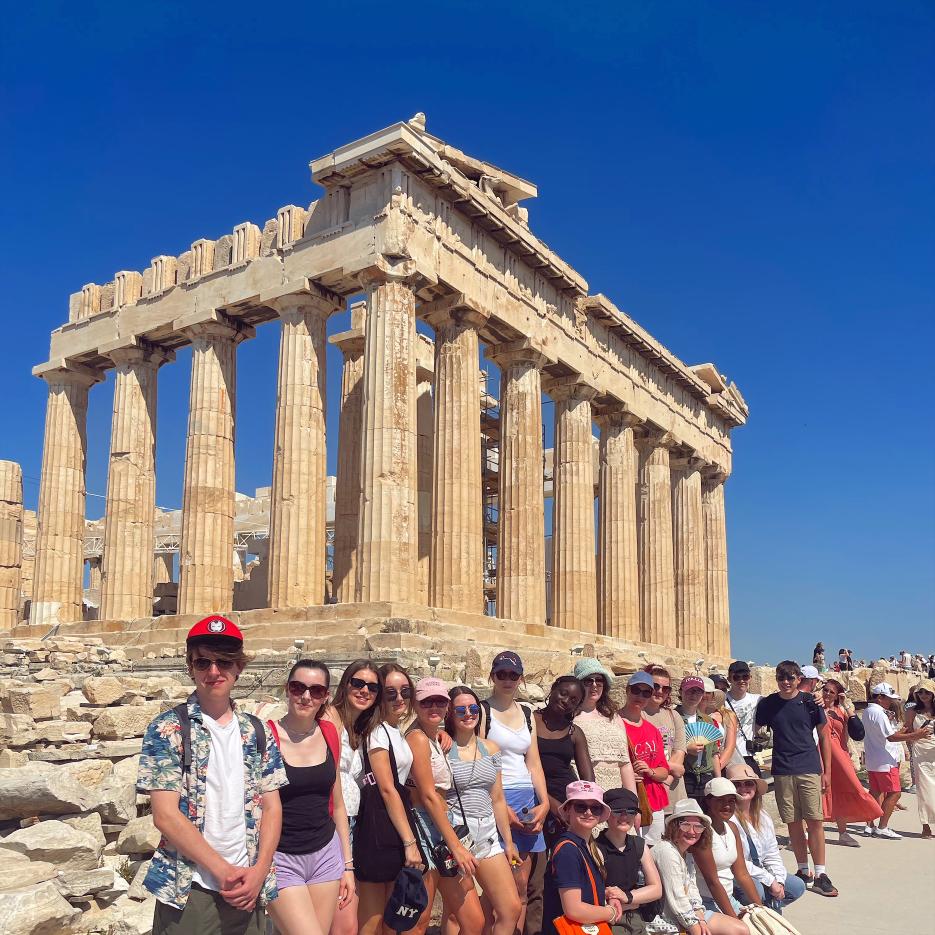
Classics and RE students enjoyed an action-packed trip to a particularly hot Athens and Delphi, where they enjoyed a fascinating insight into Greek culture and civilisation. Reports by ANASTASIA BELL, GRACE BLEIKER and EVA JOUSSEMET
(See photo gallery, below)
AFTER gathering in school, writes Anastasia Bell, our group of 21 GCSE and A-level students set off, headed for Manchester airport. The flight was just under 4 hours, and I, in particular, found it exciting as it was my first time flying!
The views over Europe were stunning, despite almost perpetual cloud cover. After landing in Athens, we took a short bus ride to our hotel, the Athens Atrium, and swiftly got into bed, although it might have been more accurate to say we laid on top of the covers as even by midnight it was about 27℃!
We were up early on Tuesday to enjoy our breakfast and prepare for a trip to the Acropolis. The Acropolis is a group of temples and buildings including the Parthenon, the Temple of Wingless Victory and the Odeon theatre. Our guide was fantastic, informing us all about the history of the site. We learned about how the Parthenon had housed a 14-foot-tall statue of Athena made of gold and ivory, about how over different eras of Athens the Parthenon had been used for different purposes including as a church and, fatally, as a storage room for gunpowder, which in 1687 during the siege of the Acropolis, led it to be blown up. We also saw the olive tree planted as a symbol of the establishment of Athens and learned about the accompanying myth. I felt a sense of awe knowing that we were on a site that has been used as a vital part of Athenian life for millennia.
After a quick stop at Plaka for lunch we took a walk to see Aristotle's Lyceum and Plato's Academy. Both locations were where the great philosophers taught new generations how to think critically about the world around them. Not only did ancient Greek students learn lessons about philosophy but they also played sports and exercised, which went with the belief that a healthy and stable body could make the mind clearer. While the teaching systems were similar in Plato's Academy and Aristotle's Lyceum, Aristotle challenged his students to make arguments against him so as to develop his own theories and give his students strength in discussion and to challenge what they know. It was fantastic knowing that we were walking where people had lived more than 2,000 years ago!
On the second day of our trip to Greece, writes Grace Bleiker, we awoke bright and early and prepared for the three-hour bus drive to Delphi. It was clear that many of the people in our group were ecstatic, due to the vast amount of history that we were able to experience firsthand. Once arriving at the archaeological site, after many of us had slept on the journey, we were met with an extraordinary view of the surrounding area, as well as the site itself. Once we made our way up to the site, our group were met with a lovely tour guide, who gave an introduction into the history behind the ruins; she truly captivated us all, and allowed us to completely take it all in, giving us a very in-depth account of the area. It should be said, however, that many of us were rather grateful to descend the site an hour later and make our way into the air-conditioned museum, due to the considerably high temperatures at the time. The Archaeological Museum was such a privilege to witness, with such intricate pieces being preserved; one that particularly caught my eye was a large gold bull reconstructed from the fragments of silver sheets excavated at the Sanctuary of Apollo; it was clear how much time and effort had gone into its restoration, and was a great privilege to be given the opportunity to see. Once the visit had concluded, we took a quick stop by the cafe, before loading back into the bus and stopping by a lovely taverna with the kindest, most accommodating staff who truly made us feel welcome. The food was just delicious, but the true highlight was the desserts, where a waiter proceeded around the taverna, and offered baklava, a traditional Greek dish, to us all, and once accepted, called out "Baklava!" which was met with the reply, "Opa!", a moment that was my personal highlight of the entire trip.
WITH the help of our tour guide, Eva Joussemet writes, we visited the Acropolis Museum and the National Archaeological Museum. The Acropolis Museum was very interesting after having already visited the Acropolis earlier in the week, as it showcased the material culture of Athenians whose lives were centred around the Acropolis and our tour guide was extremely helpful in explaining what the statues and materials meant and what they were used for.
We also visited the National Archaeological Museum on our last day in Athens, where we saw antiques from all over Greece as we progressed through the museum chronologically through the different Ancient Greek periods.
I found both museums extremely interesting as I had not known much about Ancient Greece before the trip and found it fascinating that these had remained intact for such a long time.
As well as the educational aspects of our trip, we had free time at lunch to look around Plaka, which is the main tourist area in Athens, to try Greek food and buy gifts for our families. The streets were filled with small Greek restaurants which served Greek salad, gyros, moussaka, and other local specialities. Plaka was full of little shops on the cobbled streets which sold jewellery, souvenirs, and ice creams to keep us cool!
I really enjoyed having the free time to explore this part of Athens and loved being able to choose where we ate for lunch.
One of my favourite evenings was our meal at the Greek folklore show where we were entertained with traditional Greek dancing in between courses at a restaurant in Plaka. We watched several dances where the man led two women in their traditional costumes. After we had finished eating, we were all invited to learn some parts of the dance and we all realised how challenging the dances are!
It was a lovely evening and a great insight into traditional Greek culture.
